In a Nutshell: The collection of consumer data by advertisers scaled to new heights in the 1990s as the growth of digitization generated a boom in the amount of consumer data available. Recognizing the need for a regulating body, a coalition of third-party advertising technology companies formed the Network Advertising Initiative (NAI) in 2000, with the mission to promote responsible business and data management behaviors. Today, the NAI regulates industry best practices by creating, maintaining, and enforcing a strict code of conduct for its 100+ members, including giants like Google and Microsoft. In addition, the NAI helps maintain consumer choice by providing the Choice Tool, a simple platform that allows consumers to opt-out of data collection by NAI members for the purpose of interest-based advertising. //
In Minority Report, the popular science fiction movie (loosely based on a Philip K. Dick short story), we are taken to a world that I think may represent the epitome of advertising. In the film, as the characters move about a shopping mall, a series of retinal scanners embedded in the walls and objects around them are used to instantly identify them. Then, strategically placed projectors send personalized advertisements to each individual as they pass.
While this level of targeted advertising is not really feasible with current technology (and the lack of a public willingness to be retinal-scanned at every turn), the idea of personalized advertising has become more science than fiction. In fact, it is now being used in our phones and computer browsers every day.
For example, if you spend a little time browsing new travel rewards credit cards, you’re likely to start seeing travel credit card ads on other sites you visit afterward. Known as Interest-Based Advertising (IBA), this type of marketing uses a series of technologies — and data from different websites and applications — to what owners of particular devices most likely want to buy — then show them advertisements for it.
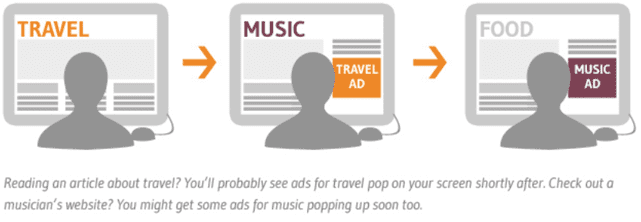
This graphic from NAI illustrates the results of interest-based advertising.
This use of data and browser technology to track users is hardly new, however. Websites have been using things like digital cookies to learn more about their visitors for decades. That’s why, in 2000, a coalition of third-party advertising technology companies formed the not-for-profit Network Advertising Initiative (NAI).
“We’re a self-regulatory body for the third-party companies,” said Anthony Matyjaszewski, Vice President of Compliance and Membership for NAI. “We put out codes of conduct and guidance documents that specify the types of activities our members can and cannot engage in, and also specify what kind of notice or consent is necessary from consumers for different types of activities.”
NAI’s Role in the Digital Advertising Industry
Rather than act as an industry mouthpiece, the NAI takes its regulatory role seriously. The organization creates and maintains strict rules designed around the goals of not just its 100+ members, but other key parties, and, of course, consumers.

Anthony Matyjaszewski is the Vice President of Compliance and Membership for NAI.
“Our codes of conduct are put together as a sort of a joint effort by our staff, our board of directors, and our member companies. But there’s also feedback from stakeholders, regulators, individual users, privacy advocates, and so on,” Anthony described. “We try to strike a balance between what the industry is looking for — and what consumers are looking for.”
The NAI is also more than just empty rules and regulations. The organization actually holds its members to its codes and standards and makes sure they maintain them.
“I think what makes us rather unique is we have a compliance program,” Anthony said. “Members don’t just promise to be responsible actors, send us a check, and get to use a logo. Every company that’s a member of the NAI has to go through an extensive review before they can join. And they actually go through that same process every year.”
That review is no cursory examination, either. Companies that want to obtain (or keep) an NAI membership have to agree to a detailed look into their data and marketing policies.
“We look at their contract language, and we read all of their privacy policies,” said Anthony. “We monitor some of the technology, to the extent that we’re able to view that. We speak with them — they fill out questionnaires. Then we go through and make sure they’re in a good position to comply with our code; if not, we highlight for them what they may need to change. And only once all of that is in place are they able to join the NAI, with the approval of our board of directors.”
Some of the most important rules in NAI’s code of conduct revolve around exactly what members are allowed to do with the data they collect — and what they are forbidden to do. For instance, strict rules forbid the use of marketing data for the purposes of financial evaluations but allow data to be used to market specific financial products.
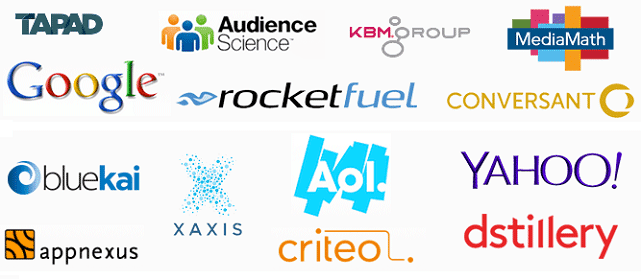
The NAI has over 100 members, including household names like Google and AOL.
“Our members can help banks or credit card issuers determine, based on, perhaps, some previous browsing activities, whether a specific browser or phone is more likely to be interested in a basic credit card, or a platinum card, or maybe a card with travel perks,” explained Anthony. “So members can help with the type of product to market, but they’re strictly forbidden from using any of that data — either themselves or allowing anyone else to use it — to actually make credit decisions. This applies to health insurance or medical coverage decisions, as well.”
The Argument for Interest-Based Advertising
In an increasingly privacy-conscious society, the collection and use of personal data for marketing purposes has drawn criticism. However, proponents of targeted advertising, and IBA in particular, argue that the practice can be good for everyone involved.
To start, proponents say both businesses and consumers benefit from a more customized ad stream. For consumers, the win is in the form of more appropriate ads, with the aim to eliminate the annoying factor. For example, targeted advertising decreases the number of ads for feminine products a male consumer might see, or the number of women who are shown ads for a certain little blue pill.
Of course, as much as you don’t want to see certain irrelevant ads — companies don’t want to waste money showing them to you. Advertising space is rarely free, regardless of whether the ad will appear on a 50-foot roadside billboard or 3-inch digital banner on a niche blog. In fact, financial services companies alone spend about $17 billion a year on marketing. (Yes, billion.) Targeted advertising ensures that hefty price tag is spent on campaigns with the highest likelihood of generating conversions.
The other argument from targeted advertising proponents is that the practice is, more or less, what keeps the internet free. In particular, Anthony said, many smaller website publishers depend on ad revenue to maintain their sites, and they can get a larger share of that hefty marketing spend through interest-based advertising.
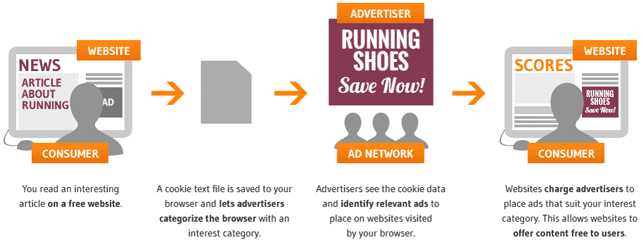
Proponents of targeted advertising point to its role in a free internet as a revenue stream for many small website publishers.
“Looking at the statistics, a targeted ad will generally be more valuable to a publisher than a non-targeted ad; the return and revenues are higher,” Anthony said. “Smaller publishers, like blogs and various niche publishers, won’t have deals with large advertisers. So, if a new company wants to sell a new product, they’re not going to reach out to every single niche blog in every town to advertise that product. With IBA, what they can do instead is advertise to users who they think are interested in the product.”
By targeting specific users, rather than individual publishers, marketers are able to reach the desired audience wherever they are browsing. This means smaller blogs and sites without a lot of pull in the normal scheme of things can earn the bigger bucks associated with targeted ads.
“Even if that user is viewing a small blog in a small town somewhere, which doesn’t have exposure to big advertisers, because of targeted advertising an advertiser is delivering an ad to that user,” explained Anthony. “And those small websites now get the revenues because those users happen to be viewing their sites. That makes it possible for these smaller sites to be able to get paid for their content, and they’re able to provide more of that content.”
The Steps for Opting Out
True to their mission to promote responsible data collection and use, the NAI offers an opt-out option for those consumers who don’t feel the benefits of IBA are worth sharing their data. Called the Choice Tool, the platform was recently updated to modernize and expand the options for users and to accommodate different types of data collection.
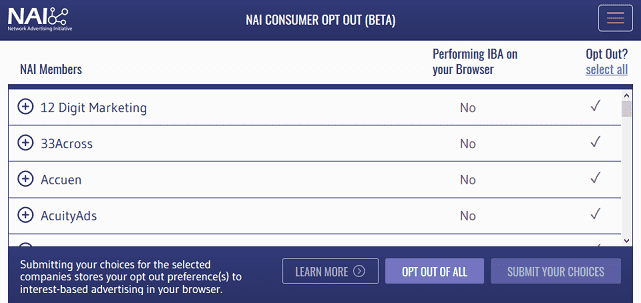
The NAI’s Choice Tool shows users which members are active in their browser as well as giving them the option to opt-out.
Though digital browser cookies — small text files used by websites and third-party agents to distinguish one browser from another — have long been the standard for data collection on the internet, they are hardly the only way. Referred to as non-cookie methods, these alternative tracking processes can analyze things like the combination of fonts used by a specific browser to recognize it across numerous websites.
“The previous tool always allowed users to check and see which companies were engaged in interest-based advertising on their browser, and to opt-out of data collection for that purpose,” Anthony said. “What the new tool does is expand those capabilities in some more browser environments. The former tool had some problems, for example, in browsers that were by default set to block cookies from third-party companies.”
In addition to allowing users to opt-out regardless of browser cookie settings, the updated tool was designed to help consumers identify the methods NAI members are using to collect and track data. For those interested in opting out of all IBA activity from NAI members, the “Opt-Out of All” button takes care of it automatically.
“Instead of just being able to see, ‘Yes, we’re engaged in targeted advertising on your browsers,’ users can now get an expanded view,” described Anthony. “Users can see if companies are using non-cookie technologies, which might let them know, ‘Yes, I just cleared all my cookies, but these two or three companies are also using non-cookie technologies, so I need to go the NAI opt-out page.’ Clearing cookies won’t necessarily clear the non-cookie technologies that are also in use.”
The Future of Advertising is Customized Content
We may not live in the science fiction marketing dream that is Minority Report, but technology seems to be bringing us ever closer. With the ability to better determine what the owner of a particular device may want to buy, marketers are coming closer to the goal of individualized advertising. For now, IBA is becoming the go-to method of targeted advertising for many companies and marketers.
Despite the ever-evolving nature of the industry, or, perhaps, because of it, NAI stays on top of both changing regulations and new technologies by maintaining contact with its members and other key industry parties.

“Things are always in flux. Members are always launching new products, new technologies, or new ways for publishers to monetize their content or advertisers to reach their audiences,” said Anthony. “In order to keep up with that and understand where the industry is at, we speak with all of our members on a regular basis. We want to make sure we understand what they’re doing, and that they understand how that might be affected by the requirements that they face as NAI members.”
Advertiser Disclosure
CardRates.com is a free online resource that offers valuable content and comparison services to users. To keep this resource 100% free, we receive compensation for referrals for many of the offers listed on the site. Along with key review factors, this compensation may impact how and where products appear across CardRates.com (including, for example, the order in which they appear). CardRates.com does not include the entire universe of available offers. Editorial opinions expressed on the site are strictly our own and are not provided, endorsed, or approved by advertisers.
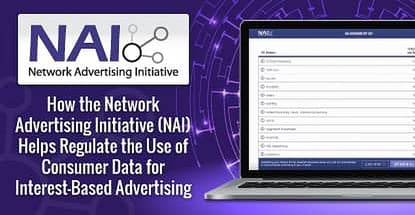


![3 Ways: Get a Lower Interest Rate on Credit Cards ([updated_month_year]) 3 Ways: Get a Lower Interest Rate on Credit Cards ([updated_month_year])](https://www.cardrates.com/images/uploads/2017/09/lowerinterest.png?width=158&height=120&fit=crop)
![15 Cheap Credit Cards: Low Interest & $0 Fees ([updated_month_year]) 15 Cheap Credit Cards: Low Interest & $0 Fees ([updated_month_year])](https://www.cardrates.com/images/uploads/2017/12/cheap.png?width=158&height=120&fit=crop)

![6 Best No-Interest Credit Cards for 18+ Months ([updated_month_year]) 6 Best No-Interest Credit Cards for 18+ Months ([updated_month_year])](https://www.cardrates.com/images/uploads/2019/06/Best-No-Interest-Credit-Cards-for-18-Months-Feat.png?width=158&height=120&fit=crop)
![APR vs. Interest Rate: Is There a Difference? ([updated_month_year]) APR vs. Interest Rate: Is There a Difference? ([updated_month_year])](https://www.cardrates.com/images/uploads/2019/11/APR-vs-Interest-Rate-Feat.jpg?width=158&height=120&fit=crop)
![7 Best 0% Interest Credit Cards (Best ([updated_month_year]) 7 Best 0% Interest Credit Cards (Best ([updated_month_year])](https://www.cardrates.com/images/uploads/2020/11/shutterstock_1620611278.jpg?width=158&height=120&fit=crop)
![7 Best Credit Card Interest Rates ([updated_month_year]) 7 Best Credit Card Interest Rates ([updated_month_year])](https://www.cardrates.com/images/uploads/2021/05/Best-Credit-Card-Interest-Rates.jpg?width=158&height=120&fit=crop)